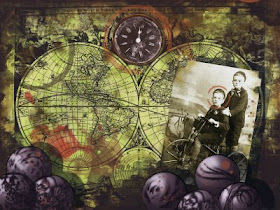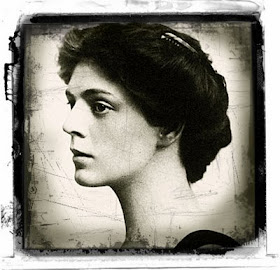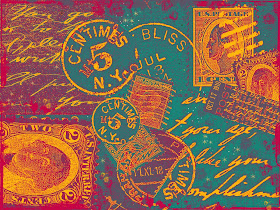
When beginning an illustration, I usually have no preconceived idea where it will go or what the finished work will look like. The story unfolds as layers are created and often the end result is a total surprise. This is the way I like to work, implying an untold story that the viewer can participate in, leaving clues and evidence of what might have happened. There is no absolute answer and the story can change at any given moment.
I am reminded of an old Calvin and Hobbs cartoon in which Calvin is working on a paint-by-number painting. Hobbs, looking over his shoulder remarkes "Hey, that's not right.... you're supposed to follow the numbers!" Calvin's reply: "But then my picture would look just like the one on the box..... " Calvin gets it.















